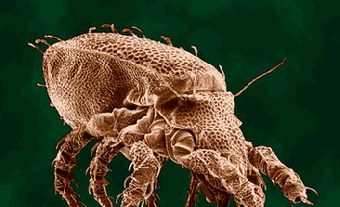
Wind-scorpion, sun-scorpion, sun-fighter, and more recently, camel-spider, are all names that have been applied to these voracious, carnivorous arthropods, class archnida, order Solifugae. However, they are neither scorpions nor spiders.
Description
Wind-scorpions are spiderlike and hairy. Their most striking feature is the enormous chelicerae, which are often about 25% of their body length. The chelicerae work as 2 pairs of scissors, piercing and crushing prey. Only body fluids and fine particles are eaten. The pedipalps are long and leglike, with specialized adhesive ends, which help to capture prey. Most have a body length about 2-4 cm, and the largest is about 12 cm long (from Saudi Arabia).
Species and Range
There are about 900 species worldwide in 12 families. They live primarily in the hot, desert regions of the world but are also found in tropical rainforests. In Canada, there is one family (Eremobatidae) with 2 genera (Eremobates and Hemerotrecha) and a possible 6 species, most of which are not yet described, found only in the southern parts of British Columbia, Alberta and Saskatchewan. Eremobates docolora and one undescribed species of Hemerotrecha are from Alberta and Saskatchewan. E. scaber and 2 undescribed species of Eremobates, and one undescribed species of Hemerotrecha, are found in southern British Columbia.
Habits and Diet
Most North American species are nocturnal, and spend the day in shallow burrows, often under stones, wood or cattle dung. They are extremely quick, aggressive predators that feed on anything they can kill, but mostly insects.
Reproduction
Mating occurs when a male encounters a receptive female. There is no spermatophore. Instead, the male transfers a sperm droplet from the substrate to the female genital opening with his chelicerae. After mating, the female constructs a burrow and nest in the ground, where she may lay 50 to 200 eggs. She may remain with the eggs until they hatch, and then catch prey to feed the entire brood. Some just abandon their nests.

 Share on Facebook
Share on Facebook Share on X
Share on X Share by Email
Share by Email Share on Google Classroom
Share on Google Classroom


